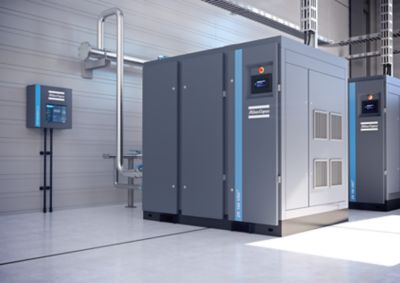Like with the food packaging and the chemical industries, the pharmaceutical industry relies heavily on nitrogen in its various applications. In fact, pharmaceutical companies require a reliable source of high purity nitrogen and can benefit by generating their own nitrogen in-house to reduce cost while controlling quality and boosting efficiency. Let’s learn more about why nitrogen is such a key element (pun intended) for this industry.
Why is Nitrogen Used in the Pharmaceutical Industry?
One of the biggest advantages of nitrogen is that it is a dry, inert gas; this means that it doesn’t react with other elements. This makes N2 extremely useful as a replacement for a hazardous or otherwise undesirable atmospheric gas, most notably oxygen. Nitrogen reduces the presence of oxygen that may provide the catalyst for combustion or negatively affect product quality. It also controls the level of oxygen in a workspace, lab or throughout an entire facility.
Nitrogen is also readily available for use! In fact, the atmosphere is composed of 78% nitrogen and 21% oxygen, with the remaining percentage being divided among a few other trace gases. Finally, nitrogen can help maintain sterility and cleanliness of pharmaceutical products.
How the Pharmaceutical Industry Uses Nitrogen Gas
Examples of nitrogen gas used in pharmaceutical manufacturing processes include:
- Blanketing. Nitrogen blanketing reduces the presence of oxygen by replacing it with nitrogen. This prevents rapid oxidation, corrosion, and rust; suppresses fire; helps prevent combustion; and otherwise ensures that that high purity pharmaceutical ingredients remain pure during manufacturing.
- Nitrogen Purging. This is a widely used technique that removes oxygen from packaging before sealing to help preserve and protect the product during transport, as well as protects again airborne contamination. Examples of items frequently packaged with nitrogen gas include blister packaged pharmaceutical products, test kits for physician offices, blood supplies, specimen containers, and sterile medical devices.
- Product Transfer. In pharmaceutical manufacturing, nitrogen is frequently used to move a reaction mixture from one vessel to another. Using a safe, inert gas to transfer liquid or powder pharmaceutical materials is crucial as they can be hazardous if improperly handled. Many pharmaceutical ingredients can be damaged or even explode if allowed to contact oxygen or water vapor.
Nitrogen Generators for the Pharmaceutical Industry
Shifting to on-site nitrogen generation of nitrogen gas can help pharmaceutical facilities achieve significant cost savings—from 40 to 80 percent, depending on current liquid nitrogen market prices. Generating nitrogen on-site enhances production flexibility by ensuring that a company has the nitrogen they need, at the purity level they need and when they need it. Generating your own N2 also frees up space otherwise needed to store nitrogen bottles (both full and empty) and can lower a company’s carbon footprint. It is very simple to financially compare generating your own nitrogen vs. purchasing liquid or high pressure vessels filled with N2.
| Technology | Advantages | Disadvantages |
|---|---|---|
| Liquid Bulk Nitrogen |
|
|
| On-site Nitrogen Generator |
|
|

